Introduction
Traditionally the national championships road cycling is held during the weekend before the start of the Tour de France. The winner may then show off his/her champion jersey at all competitions in which he/she participates for a year. In the Netherlands, the national cycling championships have been held since the late eighties of the nineteenth century. Around the turn of the century, the first difficulties in Dutch competitive cycling began to manifest and during the years before the First World War, the participants even had to move twice to Belgium to contest their national championships.
Split of the cycling association ANWB
The Algemene Nederlandsche Wielrijders-Bond (ANWB) initially organized and supported cycling races and cycling events for tourists during the last decades of the nineteenth century. However, its predominantly bourgeois members were reluctant to see the first signs of an imminent democratization process that would turn cycling into a popular sport, just like football. The emerging professionalism and the great monetary gain of the professional cyclists in the ANWB was, after all, at odds with the ideals of the gentlemen’s amateur sport. In addition, they strongly disliked the first women’s races and the rise of betting during cycling races in the velodromes, “…what would mean a moral decay, a lowering of the sport, which would ultimately harm the public”.(1) In the summer of 1898 several race commissioners authorized professional cyclists to participate in amateur cycling races against federal regulations. These and other blatant organizational violations were used by the opponents to bring the matter before the sporting committee. After several meetings in the autumn an overwhelming majority of opponents decided during a vote to definitively divest the competitive division. (2) After the turn of the century, the ANWB increasingly focused on cycling and budding motorized tourism and eventually gave up its existence as a sports association in 1905. Competitive cycling was housed in the newly established Nederlandsche Wieler-Bond (NWB), the predecessor of the in 1928 founded Nederlandse Wielren Unie (KNWU).(3)

ANWB-president Edo Bergsma (left) in Leeuwarden around 1882
Photo: © Wikipedia.org
The Sunday law of 1815
A few years later, competitive cycling in the Netherlands received an even heavier blow from a conservative-religious angle. Already before the turn of the century, the Reformed Association for Sunday Rest increased the pressure against the practice of sports on Sundays and invoked the violation of the Sunday law of 1815. This law has an ancient Christian tradition and has its origins in the legal texts of the Old Testament. In Exodus 20: 3-17 and Deuteronomy 5: 7-21, God proclaims the Ten Commandments to Moses on Mount Sinai. In the fourth commandment about the Sabbath, He says the following:
Remember the Sabbath day, to keep it holy.
Six days you shall labor, and do all your work, but the seventh day is the Sabbath of the Lord your God.
In it you shall not do any work, you, or your son, or your daughter, your male servant, or your female servant, or your livestock, or the sojourner who is within your gates.
For in six days the Lord made heaven and earth, the sea, and all that is in them, and rested on the seventh day.
Therefore the Lord blessed the Sabbath day and made it holy.
In 321 AD in the Roman Empire under Constantine the Great, Sunday already became an obligatory day of rest as ‘the most venerable day of the Sun’, a day to worship the sun(god).(4) Around the same period, Eusebius Pamphili, the bishop of the former Israeli port city of Caesarea Maritima suggested to move the Sabbath to Sunday for Christians.(5) Later in Christianity, Sunday was adopted as the Sabbath in the ‘Five Commandments of the Church’ as the day commemorating Christ’s resurrection .
The Sunday law thus states that the Sunday rest is a day of rest and prayer and that therefore all public entertainment is prohibited.(6) In particular, the football and cycling competitions were targeted that were usually contested on Sunday afternoons. In addition, the road races often caused nuisance and resentment among the local population, and the riders’ tight cycling clothing and bare legs were a guarantee for moral destruction, according to the opponents. The ANWB also got a blow because it held its meetings on Sundays.(7)
The Motor and Bicycle Act (Motor- en Rijwiel Wet) of 1905
After an initial bill to improve general road safety in 1899, the Motor and Bicycle Act was passed six years later by the cabinet of Prime Minister Abraham Kuyper, founder of the Anti-Revolutionary Party (ARP). Under the influence of the members and supporters of the Reformed Churches in the Netherlands (GKN), who made up eighty percent of the ARP voters, the freedom of cyclists, motorcyclists and motorists was severely restricted.
On the civil side the law was supported by among others the ANWB who was, after serious conflicts with the NWB and its reorientation as a tourist association, resolutely opposed to competitive cycling. The ANWB was also one of the founding members of the Tucht Unie (Discipline Union), an umbrella organization founded in 1908 and led by Edo Bergsma, mayor of Enschede and also chairman of the ANWB. According to Article 1 of its statutes the Tucht Unie set itself the goal of ‘combating the discipline of the Dutch people, in order to increase its moral, spiritual and physical strength’.(9)(10)
Article 14 of the Motor and Bicycle Act mentioned the following:
ART. 14.
Organizing or participating a motor or cycling race on the public road is prohibited.
Eventually the competent authorities may dispense the prohibition;
1°. to motor races by the Minister of Transport;
2°. to cycling races, on federal roads by the Minister of Transport, on provincial roads by the Provincial Executives.(11)
The Minister of Transport and the Provincial Executives could therefore give permission for organizing competitions on the national and provincial roads, which they rarely did under pressure from the local authorities, their political followers and coalition partners. And for the use of the municipal road infrastructure the responsibility was passed on to the local authorities, who made short work of that ‘indecent motley crew’.
The consequences for competitive cycling in the Netherlands were disastrous. Cycling races on public roads were banned from the street scene, only cycling tourist ‘reliability rides’ or ‘orientation rides’ were allowed at a low speed. The organization of the national championships were rarely admitted or contested on private grounds. The races in velodromes and matches in football stadiums were private affairs, the power and influence of the zealous opponents and law enforcement officials was limited to the entrance gates. In 1913 and 1914 the cycling federation was even refused to organize the national championships.
The Dutch championships in 1913 in Antwerp
At the beginning of May 1913 the Dutch press announced that “… the Minister of Transport could not grant permission for the road championship race on the road from Nijmegen to Roermond for reasons of traffic safety.”(12)
Subsequently, the federation members of the NWB turned to the Belgian cycling federation BWB and Sportwereld with the request to organize the national championship in Belgium. They knew there was a lot of organizational talent at Sportwereld. After all the newspaper regularly participated in major international cycling races and its own organization, the first Tour of Flanders, had been a huge success. Together with the Antwerp section of the BWB, Sportwereld was happy to accept the offer.
On Monday, August 25, 1913 the NWB secretary P.T. De Jong and vice-chairman Fr. Berkhout visited the offices of Sportwereld in Brussels to discuss the practical side of the organization.(13) The Dutch championships would take place on Sunday 21 September in Antwerp during one match for all categories (professionals, independents, enthusiasts and beginners).(14) The provincial championships would also be held at the same time with the same field of participants. The course consisted of two laps of fifty kilometers that led past Borsbeek, Wilrijk, Hemixem, Niel, Boom, Rumst, Mechelen, Duffel, Lier, Boechout and back to Borsbeek.(15) The finish was in the velodrome of Zurenborg where the riders had to ride two more laps.(16)
Fifty-five participants, some Dutch union members and board members of the largest cycling clubs arrived at Berchem station on Saturday morning September 20 and were treated to a reception in the evening by the Antwerp department of the BWB.

The finish of the Dutch championship in 1913, the velodrome of Zurenborg in Antwerp
Photo: postcard
On Sunday, the administrative check and the collection of the numbers took place under the direction of the organizers in Hotel des Sports at the Antwerp railway station. In the meantime, about five hundred Dutch cycling fans arrived and were led in a group to the starting place together with the riders. The start of the match was given by John Stol at 12.00 in the presence of a huge crowd. In anticipation of the arrival of the riders, a team race of eighty kilometers was held in the velodrome with, among others, the couples Marcel Buysse-John Stol, Pierre Vandevelde-Henri Van Lerberghe and other well-known cyclists.(17)
Due to bad luck and falls, largely due to the bad condition of the roads and the wrong tire choice of the riders, the field of participants was already halved during the first lap. After three and a half hours of racing, Frits Wiersma from Amsterdam entered the velodrome with an eight-minute lead under thunderous applause.(18) Before he could jump off his bike after crossing the finish line, he was lifted by wildly enthusiastic supporters and put on the tricolor champion jersey to the loud singing of the Dutch national anthem.(19)
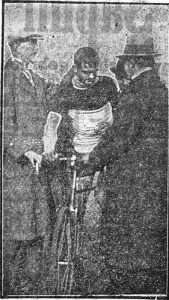
Frits Wiersma, Dutch champion in 1913, 1919 and 1920
Photo: Het Laatste Nieuws, 23 September 1913
The Dutch championships in 1914 in Brussels
Also in 1914, after two petitions, the NWB was banned from organizing the national championship on the road and had to rely on the voluntary cooperation of their southern neighbours.(20)
Oktaaf Free Steghers of Sportwereld wrote the following about it two days before the event:
Alas, that they must still have that outdated prejudice, as a result of which they are denied all right to track courses on their own soil! Otherwise bless the prohibition, because we are afforded the opportunity to render service to our northern neighbours and to make our roads available to them!(21)
Just like the year before, the national and provincial championships were held in one race with all categories on Sunday 28 June with start and finish in Molenbeek near Brussels. First a one-lap course was opted from Brussels to Leuven, Mechelen, Dendermonde, Aalst and back to Brussels.(22) Later a new course of one hundred kilometers was mapped out from Brussels to Ghent and back via Asse, Hekelgem and Aalst with start at the Molenbeek cemetery and arrival a little further in the velodrome of Karreveld where two more laps had to be completed. The supply control in Ghent was organized near the Gentbrugge velodrome by the employees of Sportwereld. At this fixed check point the riders had to stop and a stamp was placed on their jersey number.
Just as in 1913, a hundred Dutch cyclists and association members were welcomed the evening before by Sportwereld and the Brabant delegation of the BWB, in the conference room of Hotel Cosmopolite in Brussels.(23)
The editor-in-chief of Sportwereld Karel Van Wijnendaele addressed the guests with the following words of welcome:
It is the second time that Belgium has the privilege of seeing you united on its soil in order to offer you the opportunity to ride the championship, she is now reaching out to you fraternally.
Belgium has its men in cycling by dozens, they are highly regarded. You have them too, but cycling has not yet taken its rightful place in the Netherlands, may that day come soon.
On behalf of the whole of Belgium she warmly welcomes your drivers, may you honor the names of Jaap Eden, Meijers, Stol and so many others tomorrow, thousands will cheer you on Karreveld (velodrome) tomorrow, especially the one who will have conquered the champion jersey.
After a few more speakers, NWB Vice-President Fr. Berkhout expressed his thanks to Sportwereld and the BWB, with in particular the manager of Sportwereld and organizer of the championship Leon Van Den Haute.(24)
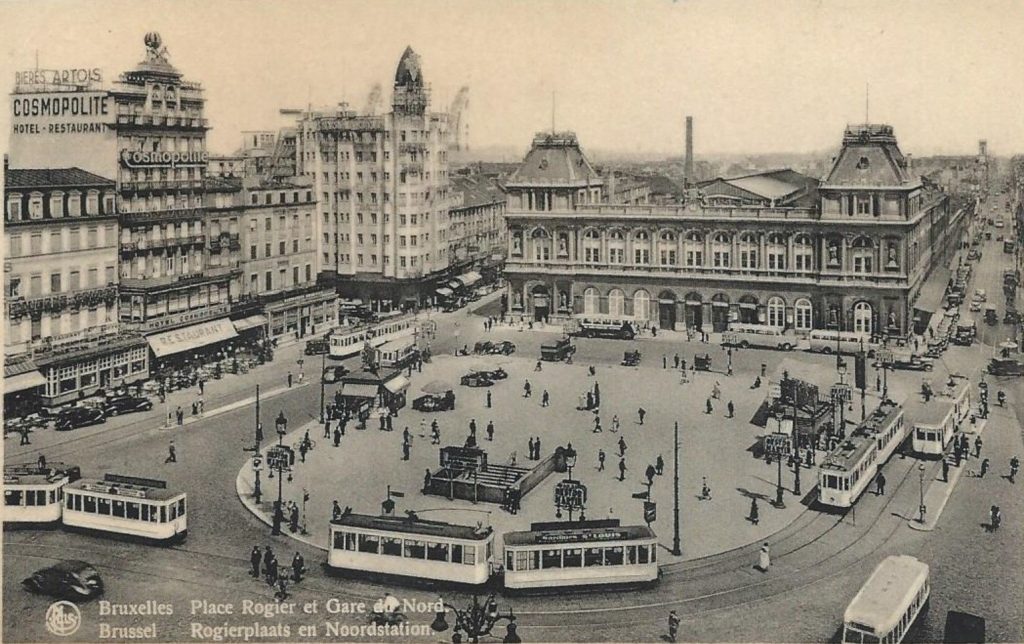
Hotel Cosmopolite (left) and the Northstation at the Rogierplein in Brussels
Photo: postcard
On Sunday forenoon the starting shot was given for seventy-one riders at 11:15 AM. Due to the fast start, the peloton had already been halved before reaching Aalst due to falls, tire and chain breaks. After almost an hour and a half of racing fourteen leaders, including the Dutch champion of 1913 Wiersma, reached the check point in Gentbrugge. On the way back to Brussels, the leading group was further thinned by material failure or by riders who could no longer keep up with the high pace and had to give up with cramps. Ultimately the duo of Chris Kalkman from Nieuwersluis near Utrecht and Piet van der Wiel from Amsterdam remained ahead. They both entered the velodrome with a three-minute lead and fraternally crossed the finish line hand in hand, much to the disappointment of the numerous crowd. The competition commissioners of the NWB decided that they had to repeat the sprint. After two extra laps Kalkman was the first to cross the finish line and became champion of the Netherlands.(25)

Chris Kalkman, Dutch champion road cycling in 1914
Photo: © dewielersite.be
Before the arrival of the riders, a Franco-Belgian race behind tandems over a hundred kilometers in three heats was competed between the best stayers of the moment such as Léon Georget, Jules Miquel, Cyriel van Houwaert and Emile Aerts.(26)
Finally
By the way, it was not the last time that Sportwereld reached out a helping hand to their cycling northern neighbors. Thanks to the mediation of editor-in-chief Karel Van Wijnendaele at Henri Desgrange, in 1936 for the very first time a Dutch selection was allowed to participate in the Tour de France.(27)
However, two more launches were fired on the same day. On 28 June 1914, the twelfth Tour de France started in Paris, while in Sarajevo the Bosnian Serb nationalist Gavrilo Princip opened fire in an ambush on the heir to the throne of the Austro-Hungarian Empire. The attack killed Archduke Franz Ferdinand and his wife Sophie Chotek instantly, prompting the outbreak of the Great War.
In principle the prohibition on cycling races is still in force today, but since the late nineteen thirties more and more permits have been given over time. In 1953 the Sunday law was also relaxed, allowing entertainment to be organized on Sundays from 1:00 pm.(28)
Article © Filip Walenta (Project Karelvanwijnendaele.be)
References
- Linders-Rooijendijk, M.F.A, Gebaande wegen voor Mobiliteit en Vrijetijdsbesteding. De ANWB als vrijwillige associatie (1883-1937) (Doctoral thesis Tilburg University, Tilburg 1989) 88. https://pure.uvt.nl/ws/portalfiles/portal/1206991/3955389.pdf> (Accessed: May 2, 2021).
- Ibid, 85-90.
- Hogenkamp, George J.M., Een halve eeuw wielersport (1867-1917) (Amsterdam 1916) 336.
- Hogervorst, Lucia, Wet uit 1815 blijft bestaan, nl, 9 December 2010. https://geschiedenis.nl/nieuws/artikel/3300/wet-uit-1815-blijft-bestaan> (Accessed: May 15, 2021).
- Sabbath in Christianity, The free encyclopedia. https://en.wikipedia.org/wiki/Sabbath_in_Christianity> (Accessed: May 15, 2021).
- Zondagswet, De Vrije encyclopedie.<https://nl.wikipedia.org/wiki/Zondagswet> (Accessed: May 4, 2021).
- De Volksvriend, 17 January 1901.
- Linders-Rooijendijk, M.F.A, Gebaande wegen voor Mobiliteit en Vrijetijdsbesteding. De ANWB als vrijwillige associatie (1883-1937) (Doctoral thesis Tilburg University, Tilburg 1989) 89-90. https://pure.uvt.nl/ws/portalfiles/portal/1206991/3955389.pdf> (Accessed: May 2, 2021).
- De Tucht-Unie (Dordrecht 1909) 5.
- Edo Bergsma was mayor of Enschede from 1896 till 1932 and president of the ANWB from 1884 till 1937.
- Kooiman, D., De Motor-en Rijwielwet. Met beknopt overzicht van stelsel en inhoud der wet en aanteekeningen bij de artikelen (Alphen aan den Rijn 1926) 20.
- De Nieuwe Courant, 2 February 1913.
- Sportwereld, 28 August 1913.
- Het Laatste Nieuws, 28 August 1913.
- De Telegraaf , 28 August 1913.
- Sportwereld, 17 September 1913.
- Ibid, 22 September 1913.
- Haagsche Courant, 23 September 1913.
- Sportwereld, 22 September 1913.
- Haarlems Dagblad, 28 April 1914.
- Sportwereld, 26 June 1914.
- Haagsche Courant, 25 May 1914.
- Sportwereld, 22 June 1914.
- De Nieuwe Courant, 29 June 1914.
- Sportwereld, 29 June 1914.
- Het Handelsblad, 29 June 1914.
- De Zuid-Willemsvaart, 10 February 1936; De Volkskrant, 13 February 1936.
- Zondagswet, nl. https://wetten.overheid.nl/BWBR0002120/1994-04-01> (Accessed: May 24, 2021).

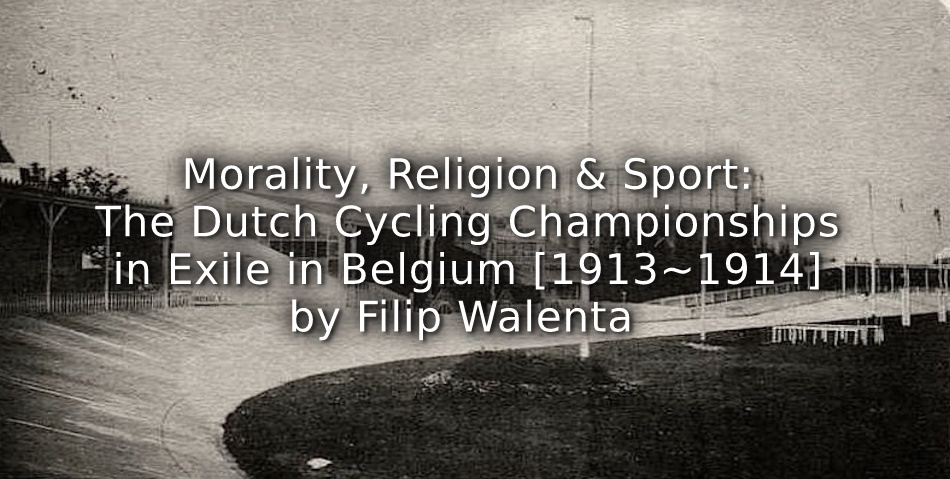
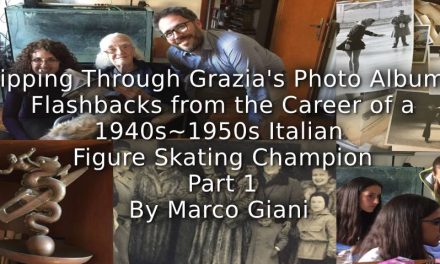
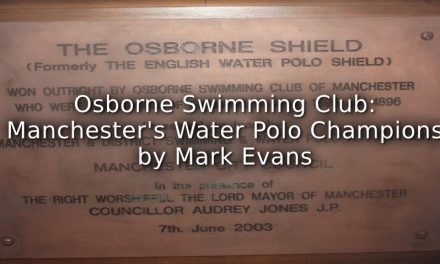
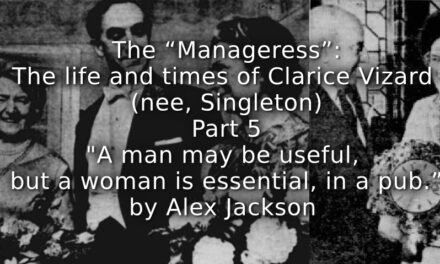
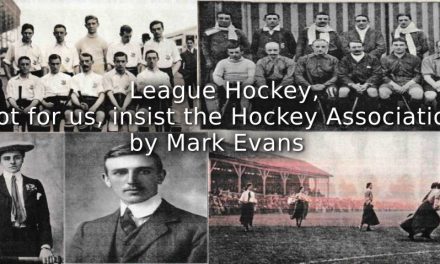
Eight years earlier in 1890, cycling races had also been banned in Great Britain due to the many accidents (sometimes fatal) and inconvenience to the local population, the greed of professional cyclists, the unbridled profits and fraudulent usury by bookmakers, and so on. The ban was even issued by the British cycling federation, the National Cyclist Union, for fear that the government would ban cycling in all its aspects. To what extent this history influenced the decision of the ANWB to dispose of the cycling races is not clear yet, but the possibility must certainly be taken into account.